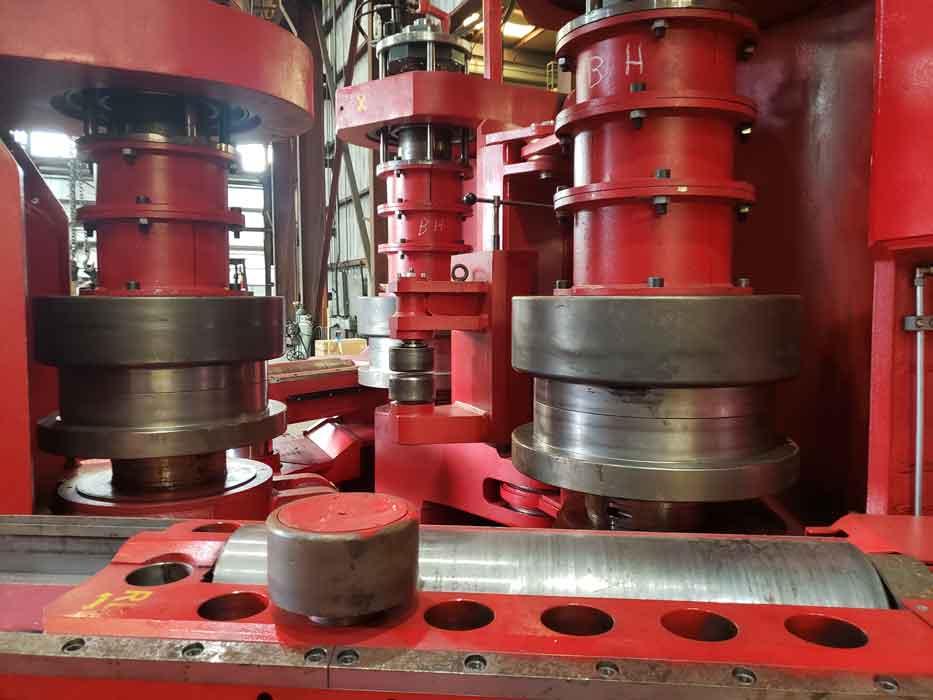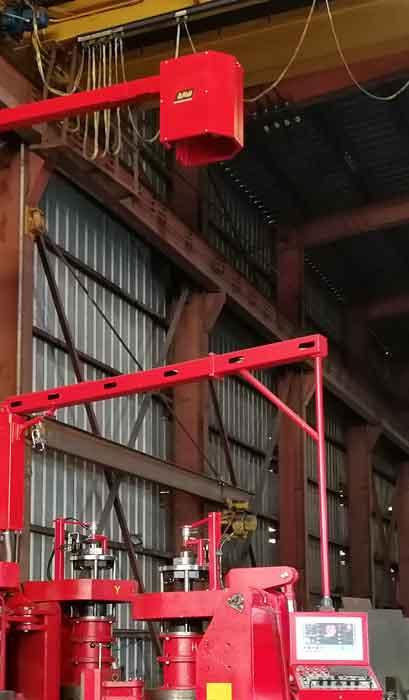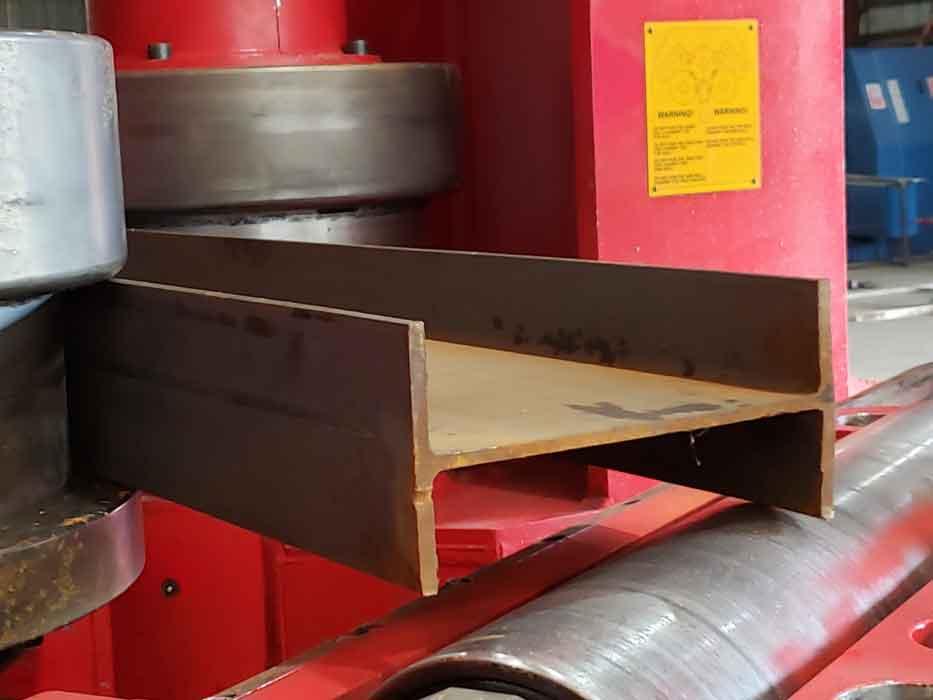Senior Editor
- FMA
- The Fabricator
- FABTECH
- Canadian Metalworking
Categories
- Additive Manufacturing
- Aluminum Welding
- Arc Welding
- Assembly and Joining
- Automation and Robotics
- Bending and Forming
- Consumables
- Cutting and Weld Prep
- Electric Vehicles
- En Español
- Finishing
- Hydroforming
- Laser Cutting
- Laser Welding
- Machining
- Manufacturing Software
- Materials Handling
- Metals/Materials
- Oxyfuel Cutting
- Plasma Cutting
- Power Tools
- Punching and Other Holemaking
- Roll Forming
- Safety
- Sawing
- Shearing
- Shop Management
- Testing and Measuring
- Tube and Pipe Fabrication
- Tube and Pipe Production
- Waterjet Cutting
Industry Directory
Webcasts
Podcasts
FAB 40
Advertise
Subscribe
Account Login
Search
Angle rolling gets flexible
A fresh approach to an old metal forming technology
- By Tim Heston
- January 18, 2020
- Article
- Roll Forming
So much of manufacturing focuses on getting the most out of a piece of equipment. Assets that go into this business cost big bucks, and so of course companies try to get the most out of them.
Sometimes, though, a specialty shop might purchase a machine that it never expects to utilize fully, but the business can justify the machine idle time if the new equipment opens the door to new opportunities and improves the top line. This can be especially true for roll shops that purchase specific (usually large) rolls for specific applications or target customers.
A system unveiled at an early November angle rolling event revealed that rolling technology is progressing in a way that could drive machine utilization skyward, even for the most specialized operation.
This isn’t typical today. Walk the floor of even the busiest roll shop and you’ll likely see at least a few idle machines, and at least one of them is probably an angle or section roll. Sure, a few angle rolls might be used almost continuously, but others might sit idle for days. That’s because each machine is designed to roll a range of section sizes to a variety of radii, down to a specified minimum radius.
A typical roll shop might bend beams up to WF 6 in. through WF 12 in. nearly every day, and perhaps bend some extra-large beams—maybe some WF 21- in. or WF 22-in. beams—but only once a week. The operation could buy a larger roll, but the investment might not be worth it, considering how rarely those extreme jobs come along.
“Many shops might only need a very large machine once in a while,” said Alex Soffritti, president of DAVI Inc., the Italian company’s U.S. subsidiary based near Dallas, which, along with Birmingham, Ala.-based Clayton Industries, hosted the November rolling event. “But for the rest of the year, they struggle [using the larger system] to bend something smaller, because they end up with a much longer flat section.”
In other words, a large machine can bend small, but it’s not ideal. That becomes especially true when material prices rise. A long sacrificial flat section becomes expensive scrap, reducing the roll shop’s competitiveness.
All this creates a conundrum that many roll shops have lived with for decades. Medium-capacity machines run continually while a few high-capacity machines—systems that also happen to consume the most floor space—don’t run nearly as often. Alas, for roll shops, it’s the cost of doing business.
But does it really have to be that way?
A few roll industry veterans, including Jim Clayton, president of Clayton Industries, asked that question several years ago at a rolling event DAVI hosted at its headquarters in Italy. At the time DAVI was touting its variable-geometry plate roll, with two bottom rolls that move side to side and a top roll that moves up and down. All that roll movement opened up a host of new rolling possibilities. For instance, moving the bottom rolls apart had the same effect as having an adjustable V die on a press brake: The roll position decreases the necessary forming tonnage and aids the forming of thick plate to tight diameters. Clayton and others saw that technology and asked a poignant question: Could a similar technology apply to an angle roll?

In the Davi Infinity MCP angle roll, the top roll (at left) moves backward and forward, while the side rolls move toward the top roll in a planetary motion. The traction unit (in the center) moves in sync with the top roll but can also move out of the way when needed, such as for bumping operations.
From this came the development of an angle roll that eventually ended up at Clayton Industries, which has been installed since November 2018. DAVI calls it an Infinity angle roll.
“We are not calling this a variable-geometry machine,” Soffritti said, mainly because it does not operate like current variable-geometry angle rolls. The machine at Clayton has side rolls with planetary movement, pivoting upward toward the top roll in an arc. The top roll moves forward and backward.
“This gives you four machines in one,” Soffritti said
The Infinity machine at Clayton has the capacity of a DAVI MCP 36 for beams up to WF 21 in. (in the hard way) but can be adjusted to form workpieces suited for angle roll sizes down to an MCP 30 for beams up to WF 10 in. (in the hard way), always reducing the amount of flat down to the minimum.
Soffritti added that DAVI can design Infinity angle rolls smaller than the one at Clayton, such as one with the same capacity as a DAVI MCP 30 for beams up to WF 12 in. (the hard way) or angles up to 8 by 8 in. The system can adapt to bend smaller pieces, too, with equivalent capacity of the DAVI MCP 20, for beams up to WF 6 in. (the hard way) or angles up to 6 by 6 in.
Infinity machines, including the one at Clayton, can be equipped with a traction unit that, when bending beams the hard way, prevents deformation of the web section. The operator can set the pressure of the traction unit to accommodate the application. If for the next job an operator needs to bump-bend a workpiece, he can move the traction unit out of the way, and the machine becomes a glorified press brake. The adjacent guide arms on either side are connected not to the rolls themselves but to the machine frame, “so they’re free to move in various positions, always in proximity of the bending rolls, to provide the ideal workpiece support as the job dictates,” Soffritti said.
Clayton’s machine also has what’s effectively an onboard optical comparator. The operator can view all of this through a camera overhead, dubbed the iRoll Camera, which allows operators to compare the radius being bent with the drawing or model without removing the workpiece from the machine.
As operators watch the camera screen, they see the side rolls pivot upward in an arc and witness something that’s roughly analogous to the “widening V die” of a variable-geometry plate roll. The side rolls’ planetary motion increases leverage, meaning that the system can form with less tonnage. This can increase throughput and bending capacity, which further extends the workpiece size range.
Finally, the independent motion of the two side rolls allows the operator to minimize the sacrificial unbent flat sections on the workpiece. Again, typically a roll shop that bends a small workpiece on a large angle roll must factor in a long flat section, which increases material costs. But because the DAVI Infinity MCP angle rolls move the way they do, an operator can move a joystick or push a few buttons on the control to reconfigure them into a smaller-machine orientation. Beyond this, operators can fine-tune the roll position to minimize the unbent flat even further.
The machine at Clayton has other bells and whistles. To change roll tools, for instance, it unscrews the central shaft screw and opens the shaft yoke automatically. The operator need only unbolt the shaft collar, and the machine takes it from there. The actual roll tool changes occur as usual, but operators no longer need to spend time rotating a massive screw, which can be especially tedious on large machines.

The DAVI iRoll Camera overhead helps the operator monitor the workpiece during the rolling operation.
Broadly speaking, this approach to the angle roll could be a harbinger. Imagine a roll shop in which each roll can tackle a range of jobs. A shop that today has, say, six or seven angle rolls of varying sizes could one day have just two or three highly flexible machines, all of which rarely sit idle.
Senior Editor Tim Heston can be reached at timh@thefabricator.com.
About the Author

Tim Heston
2135 Point Blvd
Elgin, IL 60123
815-381-1314
Tim Heston, The Fabricator's senior editor, has covered the metal fabrication industry since 1998, starting his career at the American Welding Society's Welding Journal. Since then he has covered the full range of metal fabrication processes, from stamping, bending, and cutting to grinding and polishing. He joined The Fabricator's staff in October 2007.
Related Companies
subscribe now

The Fabricator is North America's leading magazine for the metal forming and fabricating industry. The magazine delivers the news, technical articles, and case histories that enable fabricators to do their jobs more efficiently. The Fabricator has served the industry since 1970.
start your free subscription- Stay connected from anywhere

Easily access valuable industry resources now with full access to the digital edition of The Fabricator.

Easily access valuable industry resources now with full access to the digital edition of The Welder.

Easily access valuable industry resources now with full access to the digital edition of The Tube and Pipe Journal.
- Podcasting
- Podcast:
- The Fabricator Podcast
- Published:
- 04/16/2024
- Running Time:
- 63:29
In this episode of The Fabricator Podcast, Caleb Chamberlain, co-founder and CEO of OSH Cut, discusses his company’s...
- Trending Articles
Tips for creating sheet metal tubes with perforations

Supporting the metal fabricating industry through FMA

JM Steel triples capacity for solar energy projects at Pennsylvania facility

Are two heads better than one in fiber laser cutting?

Fabricating favorite childhood memories

- Industry Events
16th Annual Safety Conference
- April 30 - May 1, 2024
- Elgin,
Pipe and Tube Conference
- May 21 - 22, 2024
- Omaha, NE
World-Class Roll Forming Workshop
- June 5 - 6, 2024
- Louisville, KY
Advanced Laser Application Workshop
- June 25 - 27, 2024
- Novi, MI



























